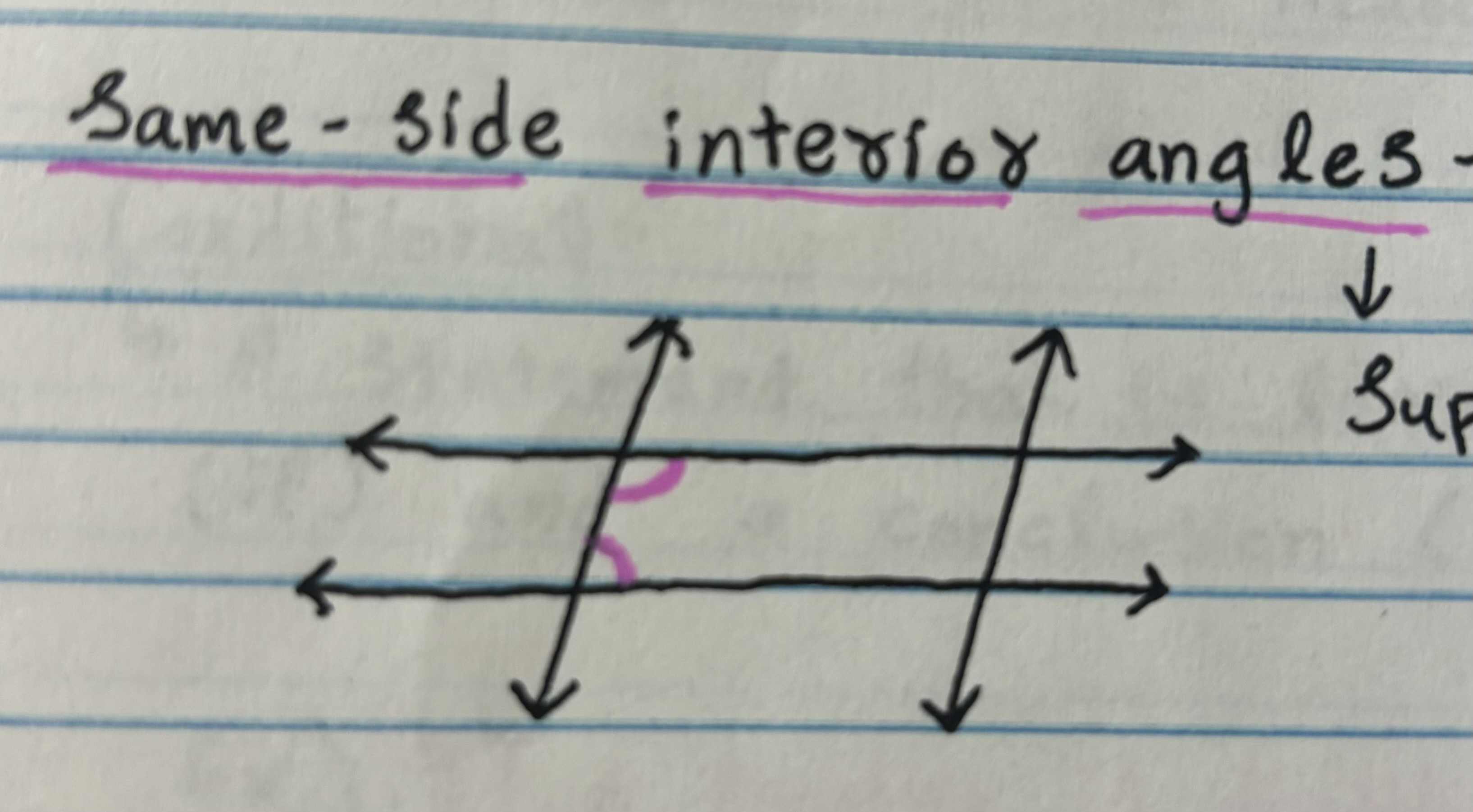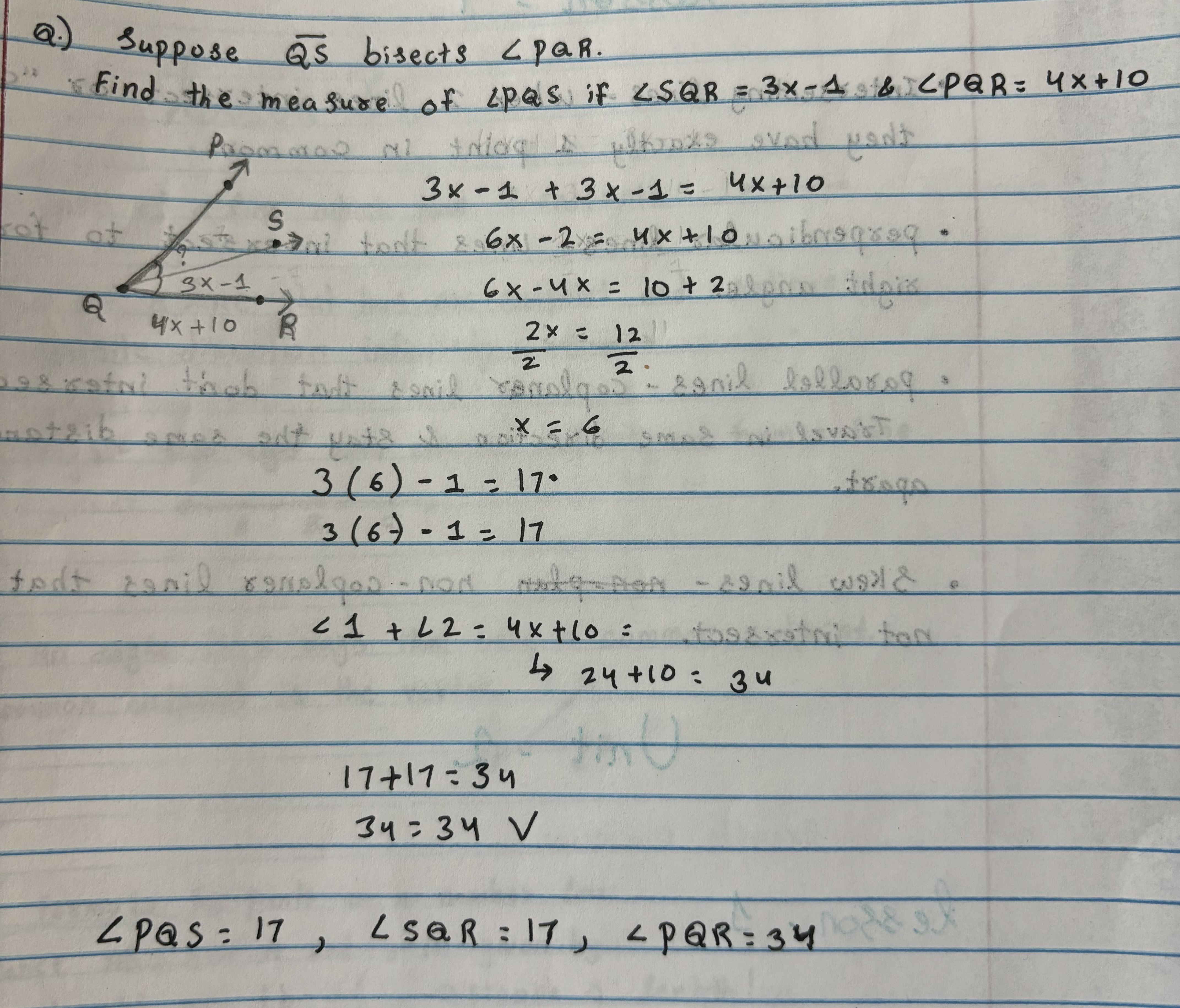Geometry A Vocabulary - Summative 1 (Units 1 and 2)
1/43
Earn XP
Description and Tags
Flashcards for Geometry A (Units 1 and 2 review)
Name | Mastery | Learn | Test | Matching | Spaced |
|---|
No study sessions yet.
44 Terms
Undefined terms
Building blocks; point, line, plane
Point
Has no size and no shape
Line
Straight and continues in both directions infinitely
Plane
Flat and extend in two dimensions infinitely with only length and width
Space
The set of all points
Intersection of 2 shapes
All the points that the intersecting figures have in common
Collinear
Points lie on the same line
Non-collinear
Points do not lie on the same line
Coplanar
Points lie on the same plane
Non-coplanar
Points do not lie on the same plane
Postulates
Rules which apply to geometry which are understood; they do not need to be proven to be true
Theorems
Rules that must be proven by applying definitions, postulates, or other theorems
Segment
Part of a line which has 2 endpoints
Ray
Part of a line that has one endpoint and continues in the opposite direction infinitely
Opposite rays
Two rays with a common endpoint that form a line
Angle
2 rays that have a common endpoint
Perpendicular lines
Lines that intersect to form a right angle
Parallel lines
Coplanar lines that don't intersect
Skew lines
Non-coplanar lines that do not intersect
Conditional statement
Has a hypothesis and a conclusion and can be written in the form 'if, then'
Midpoint
Divides a segment into 2 equal parts
Angle bisector
Divides an angle into 2 equal parts
Counter example
Disproves a general statement/conjecture
Biconditional statement
A way to express a true statement & its converse simultaneously
Transversal
Line that intersects 2 or more lines
Corresponding angles
Formed by a transversal and 2 lines where the angles lie on the same side of the transversal either above or below each intersected line
Alternate interior angles
Angles lie between the two lines and on opposite sides of the transversal
Converse
A statement that is formed by switching the hypothesis and conclusion
Inverse
A statement that is formed by negating both the hypothesis and the conclusion
Contrapositive
A statement that is formed by switching and negating both the hypothesis and the conclusion
Same-side interior angles
Same position, inside, supplementary = 180 degrees.

Angle theorems
To prove the angles have certain relationships.
Converse theorems
To prove that the lines are parallel
Example question

Facts of spherical geometry
Angle sum for triangles exceed 180 degrees
Parallel lines can intersect in 2 places
Lines do not appear straight, appear curved.
Facts of Euclidean geometry
Angle sum for any triangle is 180 degrees
Parallel lines do not intersect (ever)
Shortest distance between any 2 points is a straight line
How to Identify a plane
Naming 3 non-collider points
key concepts
Set of 3 points is always coplaner.
A set of 4 points or more is only sometimes coplaner.
A set of 3 collinear points may be on more than one plane simultaneously.
A set of 3 non-collinear points exist on only one unique plane.
Any set of 2 points is always collinear.
A set of 3 or more points is only sometimes collinear.
Midpoint formula
Used to determine the midpoint of a line segment, calculated as the average of the x-coordinates and the average of the y-coordinates of the endpoints.

Congruence/Measurement postulate
If 2 line segments have the same measure,then they are congruent.
Segment addition postulate
If A,Z and B are collinear and Z is between points A and B, then: AZ+ZB = AB
Congruence / Measurement postulates(angles)
If two angles have the same measure, they are congruent.
Distance formula for points on a number line
Distance AB, between A and B is given |a-b| or |b-a| = Distance - length!
Distance = length = measure
1.) Subtract points that are given
2.) Find absolute value = (negative number changes to positive number, if a number is positive, then that is the absolute value too- no change required).
3.) Result is the distance between them.